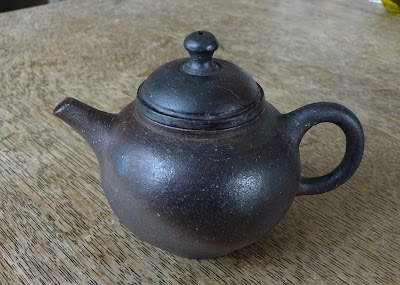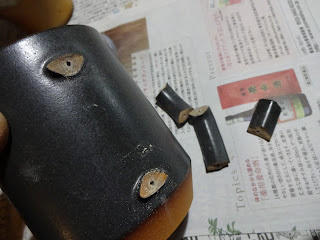I was asked to repair a chipped Chinese tea cup. It's of Ms K, who is
specialized in Chinese tea.
First, I put 'kokuso', lacquer clay on the chip to fill it. After the clay has dried, shaped it according to the cup line, and then painted it with colored lacquer.
The color is as same as possible with the blue grey surface of the ceramics.
Then paint the rim with brown colored lacquer.
As the painted surface was a little bit puffed up and also had some small particles,
I filed the surface. Finally I polished it to adjust its luster with the ceramics.


































